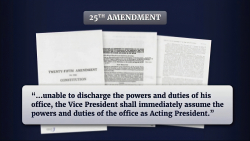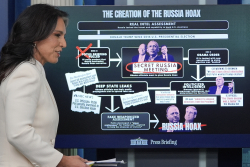Almost one-third of the US Navy’s submarine force is unavailable at any given time due to maintenance-related issues.
Admiral Daryl Caudle, President Donald Trump’s nominee for the next Chief of Naval Operations, told senators at his confirmation hearing that he wants to double the production rate of Virginia-class attack submarines. Caudle said that the nation’s commitments to the United Kingdom and Australia under the AUKUS Pact require a “transformational improvement” in submarine production capability.
Caudle, a career submariner and current leader of US Fleet Forces Command, has the background to understand where current submarine production problems lie. The admiral challenged the two public shipyards producing the Virginia boats to get creative about hiring and retaining skilled workers, of which there is an alarming shortage.
A 2023 article in the US Naval Institute’s Proceedings noted that Navy shipyards fell short of their 2022 hiring goals by about 1,000 workers. That article also observed that shipyard workers’ wages are often less than those of fast-food restaurant workers, with similar benefits packages. A large proportion of Navy shipyard workers have less than five years of experience, which hurts efficiency and erodes productivity.
Caudle said that the AUKUS agreements call for the United States to turn out 2.2 to 2.3 Virginia-class subs every year. Reaching that goal will require a 100 percent production increase, doubling shipyard output. But such an increase will be difficult, both because of the workforce problems and due to old, partially obsolete shipyards that are already overloaded.
The nation’s four public shipyards are over 100 years old. The oldest, the Norfolk Naval Shipyard in southern Virginia, dates to 1767. Its Drydock No.1 opened in 1833, and remains the same as it was then, save for its caisson. Drydock No. 1, and many other shipyard facilities cannot handle larger modern-day ships. Other shipyard facilities are in similar states of disrepair.
The Defense Department’s sharp increase in shipbuilding in the proposed 2026 budget will only squeeze shipbuilders harder. The budget request calls for 19 new ships, up from only 5 the previous year.
America Is Way Behind on Ship Maintenance, Too
The Navy seeks to address some of these problems with the Shipyard Infrastructure Optimization Program (SIOP), which will modernize and improve the nation’s shipyards. Maintenance sucks up thousands of man-days of yard availability, and inefficient processes drain workers from other tasks, reducing performance across the board. But SIOP will reportedly take 20 years to fully implement.
Almost one-third of the US Navy’s submarine force is unavailable at any given time due to maintenance-related issues. In one extreme case, the Los Angeles-class attack submarine Boise has been idle, awaiting needed maintenance, for nearly a decade. Caudle stressed that the Boise situation is “unacceptable,” but that he might look at moving on from it, saying that no clear plan for what is coming reduces the chance that the effort to repair her will be expended.
Repair and maintenance overflow has been contracted out to Norfolk’s Huntington Ingalls and Rhode Island’s General Dynamics’ Electric Boat, two private yards. Fundamentally, however, those companies are shipbuilders rather than maintenance yards. Many of the tools and skills are the same, but administration, prioritization, and managing predecessor and successor tasks requires organizational programs and knowledge those yards lacked. An extended maintenance session for a Virginia-class boat can absorb 280,000 man-days of labor, but the 8,000-odd work tasks must be properly organized, prioritized, and scheduled. One delay stacks up every task behind it like a traffic jam, further extending the time to complete the job. A clear maintenance plan must be in place for those yards to invest in upgrades, improvements, and training.
Improving Shipbuilding Efficiency Is a Labyrinthine Problem
Better operational availability through more efficient maintenance can ease production problems, but the building schedule is a clear bottleneck that must be addressed on multiple levels. Caudle said that “We need an all-hands-on-deck approach to this, to get to the 2.3 submarines per year.”
That approach must include more than facilities and raw material procurement. The entire infrastructure, including administrative engagement and workforce recruitment, training, and retention, must be overhauled. The Navy is looking at innovative methods to speed up the process, but everything must be in play.
The Pentagon’s requested $1.01 trillion FY2026 budget looks to increase the size of the fleet. But the means to reach those construction goals may not exist. Without it, those ships will stay on the drawing boards for far longer than they should.
About the Author: William Lawson
William Lawson is a military historian focusing on World War II and 20th century conflicts and the American Civil War. His specialty is operational level warfare, especially American amphibious doctrine. He writes on history, politics, and firearms for multiple publications and historical journals. He serves on the editorial advisory board for the Saber & Scroll Journal and Military History Chronicles and is a member of the Society for Military History and the American Historical Association. Lawson is based in Virginia.
Image: Wikimedia Commons.

















